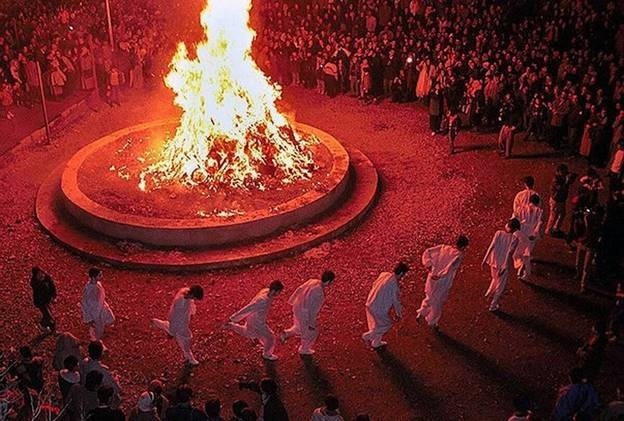TEHRAN – On Tuesday evening, clusters of Iranian Zoroastrians in various cities such as Tehran, Yazd, Shiraz, and Kerman came together to celebrate the ancient Sadeh festival.
TEHRAN – On Tuesday evening, clusters of Iranian Zoroastrians in various cities such as Tehran, Yazd, Shiraz, and Kerman came together to celebrate the ancient Sadeh festival.
Article in the Tehran Times
Passed down through generations, this mid-winter festivity, which is called Jashn-e Sadeh by the locals, is intended to pay homage to light, fire, peace, and friendship.
The annual event, which is celebrated in the early evening of the tenth of Bahman (which falls on January 30 this year), is a cultural cornerstone for the Zoroastrian community, fostering a sense of unity and connection with their ancient heritage.
According to legend, Sadeh marks the landmark discovery of fire. Ancient Iranians believed that the fire lit on this day symbolized the warming of the earth and its preparation for the arrival of spring.
The festivity reaches its climax when participants ignite a substantial pile of wood, symbolizing the enduring connection between the Zoroastrian community and the element of fire.
Named after the Farsi word for 100, “Sad,” the festival occurs precisely 50 days and 50 nights before Nowruz, the Iranian New Year starting on March 21. The significance of Sadeh lies in the belief that celebrating the warming of the earth is a crucial mid-winter ritual.
During the festivities, Zoroastrian priests, known as Moobeds, clad in white cotton robes, trousers, and hats, recite verses from the Avesta, the holy book of Zoroastrianism. As a demonstration of purity and order, Moobeds, along with Zoroastrian girls and boys dressed in white, circle clusters of shrubs carrying torches. The crowd erupts in cheers as the symbolic fire is lit, symbolizing the triumph of light over darkness.
Last December, the Sadeh festival was registered as a common heritage between Iran and Tajikistan during the 18th session of the Intergovernmental Committee for the Safeguarding of the Intangible Cultural Heritage, held in Kasane, Botswana.
According to Iranian anthropologist Alireza Hassanzadeh, Sadeh, as one of Iran’s ancient rituals, takes place in two cultural domains of Zoroastrians in Iran, such as cities in cultural areas like Kerman, Yazd, Shiraz, Isfahan, and more. On the other hand, it is also celebrated in the cultural domain of Khorasan, especially among rural communities.
While some view Sadeh as a symbolic battle against coldness, ice, and darkness through the celebration of fire, the festival is also intertwined with mythological narratives. Persian mythology recounts the tale of Houshang, the second king of the world, who discovered fire while attempting to strike a dragon with a stone. The spark generated from the collision of two flintstones marked the inception of fire.
Sources say the festival’s origins remain shrouded in mystery, with no explicit mention in Zoroastrian holy texts. Some scholars speculate that the ceremony predates Zoroastrianism, the world’s oldest monotheistic religion, adding an extra layer of historical intrigue to the festival.


Thank you so very much for sharing information about the SAD festival. If Zoroastrians ruled the world it would be a much nicer place.